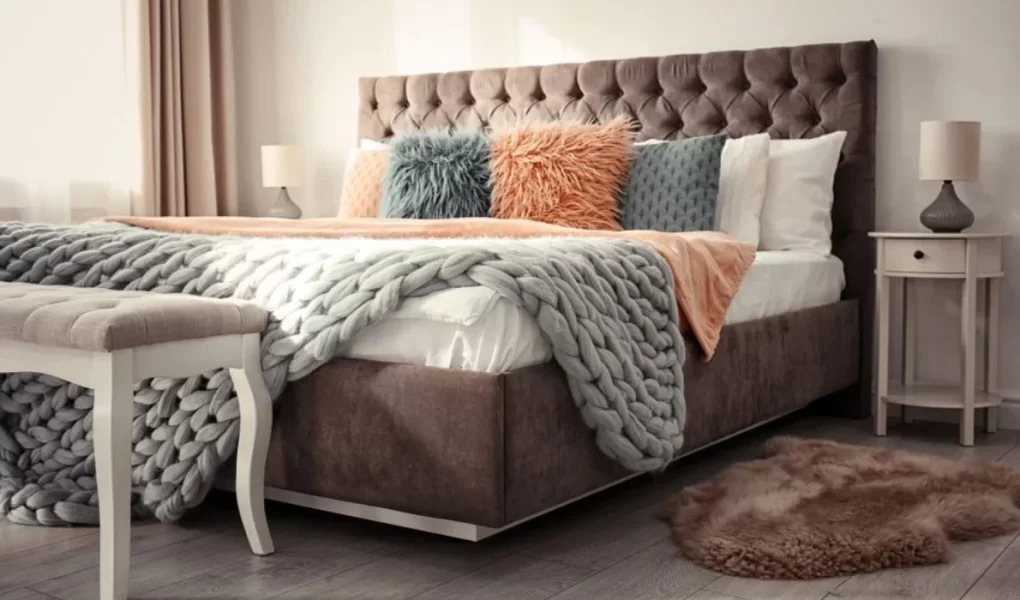When choosing the right bed for your needs and preferences, it’s essential to consider factors such as comfort level, support, materials used, and any specific health concerns you may have. You opt for a traditional innerspring, memory foam, or latex mattress; each type offers unique features and benefits catering to different sleep preferences.
If you’re looking for an alternative to the traditional bed types mentioned above, adjustable beds provide customizable comfort settings, while waterbeds and airbeds offer unique sleeping experiences. Each alternative bed option has its pros and cons, depending on your individual needs.
The perfect bed for you will depend on what feels most comfortable and supportive for your body. Take the time to test out different types of beds before deciding. A good night’s sleep is crucial for overall health and well-being, so investing in a quality bed that meets your specific requirements is worth it.
Traditional Bed Types: Innerspring, Memory Foam, and Latex

Due to the coil system inside, innerspring mattresses are known for their support and bounce. They offer a classic feel that many people prefer.
Memory foam mattresses contour to your body shape, providing excellent pressure relief and comfort. They’re great for those who want a bed that moulds to their body.
Latex mattresses are durable and resilient, offering support and responsiveness. They are also naturally cooling and hypoallergenic, making them a popular choice among allergy sufferers.
Each traditional bed type has unique features and benefits, catering to different preferences and needs. When choosing the right one for you, consider factors like firmness level, sleeping position, budget, and any specific health concerns.
Features and Benefits of Each Type
Innerspring beds are known for their traditional coil support system, which offers a bouncy feel. As a result, they offer excellent airflow, allowing you to stay cool all night long.These beds are durable and provide solid edge support, ideal for those who prefer a firmer sleeping surface.
Memory foam mattresses contour to your body shape, providing personalized comfort and pressure relief. They absorb motion transfer, making them perfect for couples or light sleepers. Memory foam is hypoallergenic and resistant to dust mites, offering a clean sleeping environment.
Latex beds are naturally breathable and resistant to mould and dust mites, making them an excellent choice for allergy sufferers. Latex mattresses offer responsive support with a bit of bounce, which suits those who like a balance between contouring comfort and a buoyant feel.
Which Type is Best for You? Factors to Consider

Your sleeping position and any specific health concerns. Innerspring mattresses support back sleepers, memory foam moulds to your body’s shape, offering pressure relief, and latex is durable and hypoallergenic.
Your comfort preferences. An innerspring mattress might be ideal if you like a bouncy feel with more airflow. Memory foam could be the way for those who prefer a sinking-in sensation that alleviates pressure points. Latex offers a balance of responsiveness and contouring comfort.
Take into account your budget and durability expectations. Innerspring beds are typically more affordable but may need replacing sooner than memory foam or latex options that tend to last longer.
Alternative Bed Options: Adjustable Beds, Waterbeds, and Airbeds
First up, we have adjustable beds. These innovative beds allow you to customize the position of your mattress, offering personalized comfort for reading, watching TV, or sleeping.
Next on the list are waterbeds. With their unique design filled with water, these beds can contour to your body shape, providing gentle support and reducing pressure points.
Airbeds offer adjustable firmness levels, and you can inflate or deflate the mattress according to your preference. This feature makes them a versatile option for those who want to change their sleeping experience.
Each of these alternative bed options offers a different level of comfort and customization. Whether you’re looking for extra flexibility or a unique sleeping experience, exploring these alternatives could help you discover your ideal bed match.
Pros and Cons of Alternative Beds
Adjustable beds offer customizable comfort with features like elevation for better sleep quality. However, they can be more expensive than traditional beds and may require special sheets to fit the adjustable frame properly.
Waterbeds provide a different sleeping experience with gentle support and reduced pressure points. However, they require maintenance, such as filling and heating the water chamber regularly.
Airbeds allow you to adjust firmness levels to suit your preference. Yet, if not appropriately maintained, they can be prone to leaks or malfunctions.
How to Choose the Perfect Bed for Your Needs and Preferences
Your sleeping position and any specific health concerns will help determine the type of mattress that will provide adequate support and comfort.
Next, consider the bed size that fits your space and lifestyle. Whether you prefer a cosy, cosy twin or a spacious king, ensure it suits your room’s dimensions.
Consider the mattress’s material—innerspring, memory foam, or latex—based on your personal preferences for firmness and temperature regulation.
Test out different mattresses before making a decision. Visit stores or read reviews online to understand what feels best for you.
Choosing the perfect bed balances comfort, support, and personal preference.




